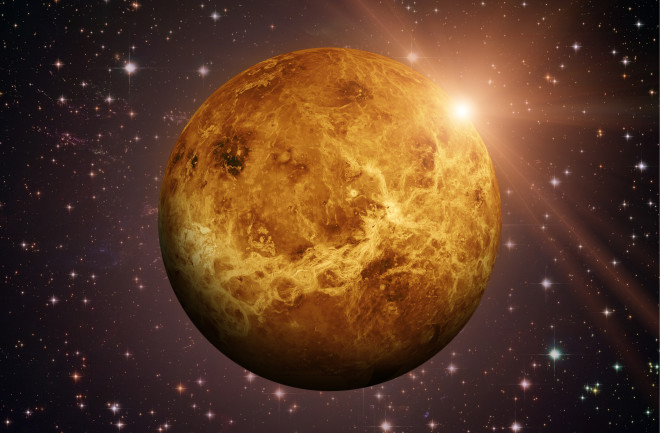Venus is the second planet from the sun and is often referred to as Earth’s “sister planet” due to its similar size and composition. However, the similarities end there, as Venus is a hot, hellish world with a thick, toxic atmosphere and extreme surface temperatures that can melt lead.
Discovery and Exploration
Venus has been known since ancient times and was named after the Roman goddess of love and beauty. The planet was first observed through a telescope by Galileo Galilei in the early 17th century. The first spacecraft to visit Venus was the Soviet Union’s Venera 1 mission in 1961, which was followed by a series of successful Venus missions by both the Soviet Union and the United States.
Physical Characteristics
Venus is similar in size to Earth, with a diameter of about 7,500 miles (12,100 kilometers) and a mass that is about 80% of Earth’s. However, the similarities end there. Venus has a thick atmosphere composed mainly of carbon dioxide, with clouds of sulfuric acid that create a bright, reflective layer that can be seen from Earth.
The thick atmosphere traps heat, creating a runaway greenhouse effect that has caused Venus to become the hottest planet in the solar system. Surface temperatures can reach up to 864 degrees Fahrenheit (462 degrees Celsius), hot enough to melt lead. The planet’s surface is also dominated by volcanic features, including large shield volcanoes, lava flows, and impact craters.
Atmosphere
Venus’ atmosphere is composed mainly of carbon dioxide, with small amounts of nitrogen and sulfur dioxide. The atmosphere is about 90 times denser than Earth’s atmosphere, which creates a strong greenhouse effect that traps heat and causes the extreme temperatures on the planet’s surface.
The clouds in Venus’ atmosphere are made up of sulfuric acid, which creates a bright, reflective layer that can be seen from Earth. The clouds also produce lightning and other electrical phenomena, which have been studied by spacecraft missions.
Exploration
Venus has been visited by several spacecraft, including the Soviet Union’s Venera and Vega missions and the United States’ Pioneer Venus and Magellan missions. These missions have provided valuable data on the planet’s atmosphere, surface features, and geology.
The Magellan mission, which orbited Venus from 1990 to 1994, used radar imaging to create detailed maps of the planet’s surface. The maps revealed a highly volcanic terrain, with large shield volcanoes, lava flows, and impact craters. The data from the Magellan mission has been used to create 3D models of the planet’s surface and to study the geologic history of the planet.
Possible Life?
While Venus’ surface is inhospitable to life as we know it, some scientists have speculated that life could exist in the clouds of the planet’s atmosphere. The clouds are composed mainly of sulfuric acid, but they also contain traces of water and other organic molecules.
In 2020, scientists announced the discovery of phosphine gas in the atmosphere of Venus, which could be a potential sign of life. However, the discovery is controversial and has not been confirmed by follow-up observations.
Potential for Future Exploration
Venus has been the target of several proposed future missions, including landers, orbiters, and even human missions. The proposed missions aim to study the planet’s atmosphere, geology, and potential for life. Some of the proposed missions include:
- VERITAS (Venus Emissivity, Radio Science, InSAR, Topography, and Spectroscopy) is a proposed mission by NASA that would use radar imaging to study Venus’ surface and geology.
- DAVINCI+ (Deep Atmosphere Venus Investigation of Noble gases, Chemistry, and Imaging Plus) is another proposed mission by NASA that would send a probe to study the planet’s atmosphere and surface.
- Venera-D is a proposed mission by the Russian space agency Roscosmos that would include an orbiter and a lander to study the planet’s geology, atmosphere, and potential for life.
Conclusion
In conclusion, Venus is a planet with a fascinating and extreme environment that has captured the imagination of scientists and space enthusiasts alike. Despite its challenges, the planet has been the target of several successful missions that have provided valuable data on its atmosphere, surface features, and geology. As our understanding of Venus continues to grow, the potential for future exploration and discovery remains high, making it an exciting destination for future missions.



















Add Comment